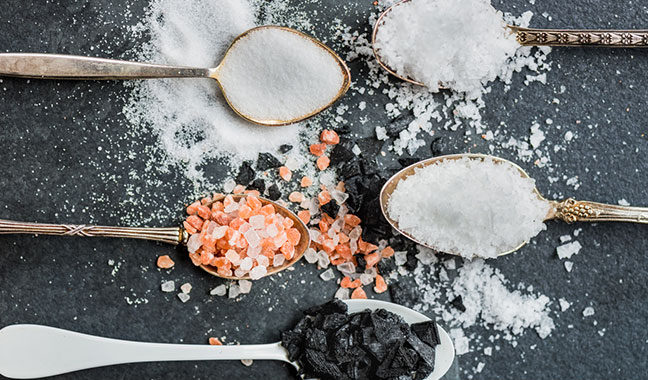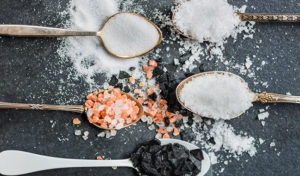
 Including a variety of salts in diet can help in maintaining electrolyte balance, reducing cramping and bloating, and preventing indigestion. Know more details here.
Including a variety of salts in diet can help in maintaining electrolyte balance, reducing cramping and bloating, and preventing indigestion. Know more details here.
Salt is the key ingredient in food. The amount of salt that you add while cooking can make or break the dish. The “add salt to taste” is a phrase which is easier said than done, and we all agree to this. “Salt remains one of the most celebrated ingredients in cooking, especially in Indian cooking,” says celebrity nutritionist Rujuta Diwekar. As part of the recent guideline of the ongoing fitness project, Diwekar talks about salt diversity and the need for including a variety of different salts in the diet.
Why it is important to include a variety of salts in diet
Shushruta, Charaka, Vagbhat, the main contributors to Ayurveda, have written a lot about the uses of a variety of salts and their medicinal value, mentions Diwekar, who is also the nutritionist of Kareena Kapoor Khan.
She goes on to add that yogis are known to use at least different five different types of salt: saindhava, samudra, suvarchala, vida and romaka or panch lavana. Using these variety of salts can avail you with the following kinds of benefits:
- They can help in maintaining electrolyte balance
- They reduce cramping and bloating
- They can help in keeping the nerves strong
- They can help in reducing digestion problems including irritable bowel syndrome
Ways to add variety of salts in your diet
Different kinds of salt can be used for cooking different kinds of foods.
1. Saindhava or saindha namak or rock salt, is used in cooking during fasts. It can be used for preparing arbi, suran, rajgira, kuttu, etc.
2. Samudra or sea salt or jada namak is used for the purpose of soaking dals and pulses. This salt is also used as bath salts.
3. Suvarchala or black salt or kala namak is added in sherbets, chutneys, over fruits sometimes. It can also be used for gargling, informs Diwekar.
4. Vida and romaka variety of salts are usually used for more therapeutic purposes.
Along with these salts, you can continue to use iodised salts, but do know that all these salts contain minerals, including iodine.
The idea here to not infer that you need to have lots of salt. The World Health Organization mentions that salt intake of less than 5 gms per day for adults helps in reducing blood pressure and lowers the risk of cardiovascular disease, stroke and coronary heart attack.
Having said that, having diversity in your daily salt intake can help preventing indigestion and facilitating better assimilation of nutrients.
“Which is why if you are constipated you crave something salty. Interestingly, the end taste of salt according to Ayurveda is supposed to be madhura or sweet and therefore low salt diets may give you sugar cravings,” says Diwekar.
Summarising it all, she asserts that salt is the villain its made out to be. It is important to have salt in your diet. “Use at least 4 salts regularly in your life like rock salt, sea salt, black salt and table salt,” she adds.







